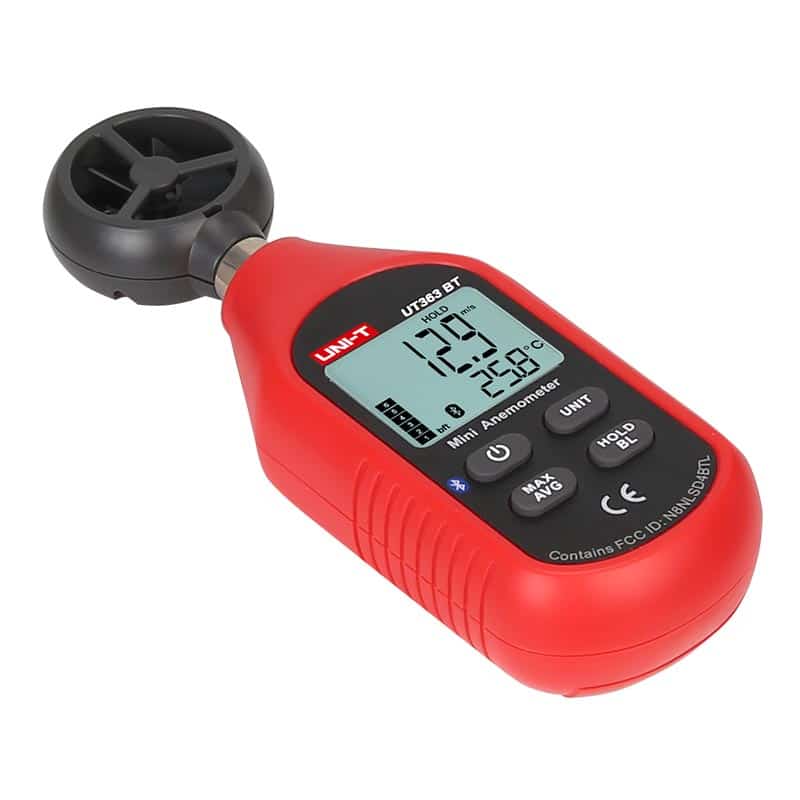Comparing Digital and Mechanical Anemometers: Which is Right for You?
Comparing Digital and Mechanical Anemometers: Which is Right for You?
Blog Article
Anemometers Introduced: Understanding Their Significance in Ecological Tracking and Safety And Security Actions
The role of anemometers in environmental surveillance and safety actions is typically underestimated, yet their value is undeniable. These tools have a long history rooted in clinical inquiry and technical improvements, advancing to become vital tools in various fields. From meteorology to air travel security, anemometers play a critical duty in giving accurate data that educates decision-making processes and improves total safety and security. Recognizing the details of anemometers introduces a globe of vital insights that are basic to our understanding of the environment and the actions we require to ensure security.
History of Anemometers
The evolution of anemometers can be traced back to the old people where primary wind determining tools were very first utilized. These early wind dimension devices laid the foundation for the development of much more advanced anemometers in time. One of the earliest well-known anemometers was the hemispherical cup anemometer created by Leon Battista Alberti in the 15th century. This style was composed of 4 hemispherical mugs that accumulated wind power, providing a dimension of its strength based upon the speed of turning.
In the 18th century, the renowned scientist John Thomas Romney Robinson introduced the Robinson anemometer, which included 4 hemispherical mugs mounted on horizontal arms that extended from a central axis. This style came to be a requirement in atmospheric dimensions due to its precision and reliability. Over the years, developments in innovation resulted in the growth of more modern anemometers, including ultrasonic anemometers and laser Doppler anemometers, providing enhanced precision and performance in determining wind speed and instructions. The background of anemometers showcases an amazing trip of innovation and progression in the area of meteorology.
Types of Anemometers
Throughout the area of weather forecasting, various types of anemometers have actually been established to properly measure wind rate and direction. Sonic anemometers make use of ultrasonic signals to determine wind speed and instructions properly. Hot-wire anemometers operate based on the principle that the cooling result of wind on a heated wire is proportional to the wind rate.
Applications in Meteorology
Having actually gone over the different types of anemometers utilized in weather forecasting for gauging wind speed and direction, it is crucial to discover their sensible applications in the field. Anemometers play a critical role in weather forecasting by providing real-time and accurate data on wind conditions (anemometer). Meteorologists make use of anemometers to monitor wind rate and instructions to forecast climate patterns, concern cautions for severe weather condition occasions like twisters, hurricanes, and tornados, and examine atmospheric conditions for air travel security
In weather forecasting, anemometers help in comprehending local and local wind patterns, which are important for anticipating climate adjustments and figuring out weather trends. These gadgets are also used in research to examine microclimates, metropolitan heat islands, and air contamination diffusion. Additionally, anemometers are used in agriculture to maximize plant monitoring techniques, such as irrigation and chemical application, based on wind conditions.
Value in Aeronautics Safety
An essential aspect of making sure air travel safety depends on the thorough tracking of wind conditions using anemometers. Anemometers play an essential role in aviation by providing real-time information on wind rate and instructions, aiding pilots in making notified choices during trip, landing, and liftoff. Uncertain and strong winds can dramatically impact airplane operations, making it crucial for aviation authorities to depend on exact wind dimensions to make sure the security of guests and team.

In the dynamic environment of air travel, where also small modifications in wind rate and instructions can have profound results, anemometers stand as indispensable devices for advertising secure and risk-free flight.
Function in Environmental Study
Just how do anemometers add to developments in ecological research? Anemometers play a vital function in environmental research by supplying crucial information on wind rate weblink and direction. This info is important for recognizing different climatic processes, such as air contamination dispersion, climate patterns, and climate adjustment. By properly determining wind attributes, anemometers help scientists examine the activity of pollutants airborne, examine the influence of industrial discharges, and forecast the spread of pollutants in the environment.


Verdict
To conclude, anemometers have actually played a critical duty in environmental tracking and safety and security measures. With an abundant history and different types readily available, these devices have actually been widely utilized in weather forecasting, aviation safety and security, and environmental research study. Recognizing the relevance of anemometers is necessary for properly determining wind rate and direction, which is vital for anticipating climate patterns, making sure safe aeronautics procedures, and carrying out ecological researches - anemometer. Their payments to these fields can not be ignored.
One of the earliest known anemometers was the hemispherical cup anemometer created by Leon Battista Alberti in the 15th century. Over the years, improvements in innovation led to the advancement of even more contemporary anemometers, consisting of ultrasonic anemometers and laser Doppler anemometers, offering enhanced accuracy and efficiency in determining wind rate and direction. Hot-wire anemometers operate based on the principle that the cooling impact of wind on a warmed wire is symmetrical to the wind rate. Meteorologists use anemometers to monitor wind speed and direction to forecast weather condition patterns, problem warnings for severe weather occasions like storms, typhoons, and tornadoes, and analyze climatic problems for air travel security.
Understanding the relevance of anemometers is important for accurately gauging wind rate and instructions, which is essential for click site predicting climate patterns, making certain secure air travel operations, and carrying out environmental research studies. (anemometer)
Report this page